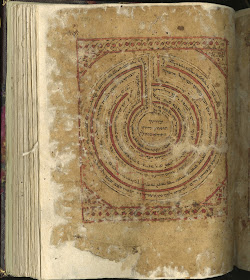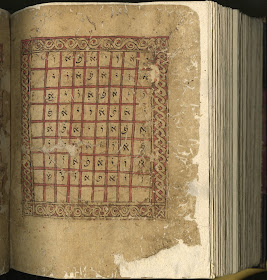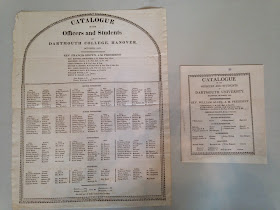 We just acquired a truly amazing manuscript that has us all a twitter (though we don't Tweet, just blog!). The manuscript is a copy of the Taj Torah produced in Yemen c. 1400-1450. This is one of only three known Hebrew manuscripts with illustrated carpet pages. The Torah is prefaced with a copy of the Tajim, a Yemenite grammar and guide to reading the Torah, so the manuscript is both a sacred text and a pedagogical device for its reading.
We just acquired a truly amazing manuscript that has us all a twitter (though we don't Tweet, just blog!). The manuscript is a copy of the Taj Torah produced in Yemen c. 1400-1450. This is one of only three known Hebrew manuscripts with illustrated carpet pages. The Torah is prefaced with a copy of the Tajim, a Yemenite grammar and guide to reading the Torah, so the manuscript is both a sacred text and a pedagogical device for its reading.The manuscript has many possible uses in the classroom at a time when medieval and early modern Jewish texts are growing in interest and importance in academia. The specific aspects of it that most excite us are the carpet pages that can be compared and contrasted with Western illuminations and elucidate children's education in the middle ages, and the potential for discussion of the manuscript as an object (i.e., its construction, material components). Among the nice carpet pages are a drawing of the labyrinth of Jericho and a "Magical Square" of letters in a pattern.
Two years ago we worked with a class on medieval Christian, Islamic and Jewish traditions. We were able to lay out excellent medieval representations of the Koran and the Vulgate Bible but we lacked a comparative example of the Torah or similar Jewish text. That gap is now filled. We are able to lay, side by side, representative texts from all three monotheistic faiths, and all from roughly the same time period.
To take a look, come to Special Collections and ask to see Codex 003265.

